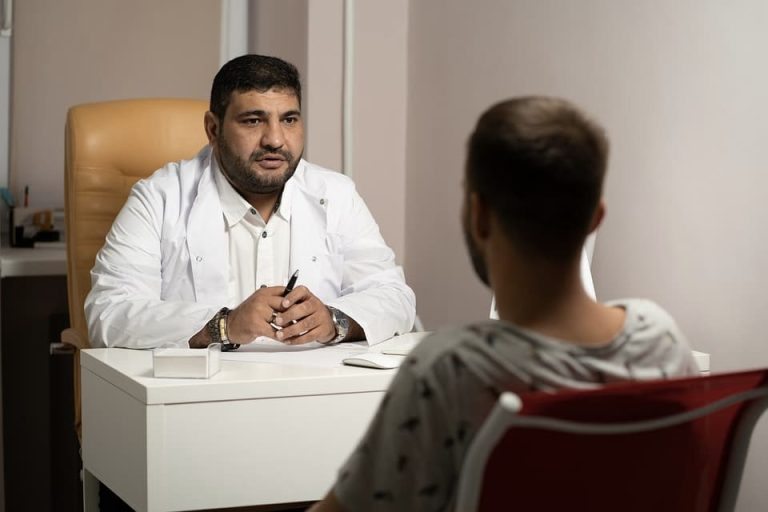Breast Self-Exam Is More Important Than You Think – Here’s How To Perform It
It’s hard to think of anything more important than our health. And while most people are aware of the need for regular checkups with a doctor, many don’t realize the importance of self-exams. Breast cancer is one of the leading causes of cancer death in women, and early detection is key to surviving it. That’s why today we’re going to talk about breast self-exam – what it is, why you should do it, and how to perform it correctly.
Breast Exams
According to the National Breast Cancer Foundation, approximately 1 in 8 women in the US will develop breast cancer at some point in their lifetime. While that number may seem small, it adds up to a lot of people – over 266,000 women were diagnosed with breast cancer in 2018 alone.
The good news is that death rates from breast cancer have been declining since 1989. This is thanks to increased awareness and early detection through screening mammograms and self-exams. In fact, according to the American Cancer Society, when caught early, the 5-year survival rate for breast cancer is 99%. Because of this, it’s also important to be aware of the breast cancer stages to watch out for. These include:
- Stage 0: Also known as Carcinoma in Situ, this is the earliest stage of breast cancer. The cancer cells are present but have not spread outside the milk ducts or lobules where they began.
- Stage 1: In this stage, the cancer is small and has not spread to the lymph nodes.
- Stage 2: The cancer is more extensive and may have spread to the lymph nodes, but not to other body parts.
- Stage 3: Cancer has spread to the lymph nodes and surrounding tissues.
- Stage 4: Cancer has spread to other organs in the body, such as the lungs or brain.
While most people are familiar with mammograms – an x-ray of the breast that can detect tumors – few know how to perform a breast self-exam (BSE). This simple test can be done in the privacy of your own home and only takes a few minutes.
Why Self-Exam?
Mammograms are an important tool in the fight against breast cancer, but they have limitations. They are not always accurate, especially in women with denser breast tissue. In addition, they can be expensive and may not be covered by insurance. Breast self-exams, on the other hand, is free and easy to do.
How To Perform A Breast Self-Exam
The best time to do a BSE is about a week after your period ends. This is because your breasts are not as tender at this time. If you don’t have periods, or they are irregular, choose a day that is easy for you to remember, such as the first of the month.
- To begin, stand in front of a mirror with your arms at your sides. Look for any changes in the size or shape of your breasts and any puckering, dimpling, or redness of the skin. Then, raise your arms above your head and look again.
- Next, feel your breasts with your hands. Use a circular motion starting at the outside of your breast and moving in toward the nipple. Be sure to feel all of the breast tissue from top to bottom and side to side. Use light, medium, and firm pressure to feel different layers of tissue.
- You can also lie down to do this part of the exam. Place a pillow under your right shoulder and your right arm behind your head. Using your left hand, move the pads of your fingers around your right breast in a circular pattern. Be sure to use different amounts of pressure to feel different levels of tissue. Repeat these steps on the left side.
- Finally, feel each breast while you are in the shower. Use a soapy washcloth or shower puffer to make small circles with moderate pressure over your entire breast.
What To Look For
There are several things you should be looking for when you perform a breast self-exam. These include:
- Any change in the size, shape, or appearance of your breasts
- Dimpling, puckering, or redness of the skin
- A new lump or mass
- Nipple discharge (this could be clear, pink, yellow, green, brown, or bloody)
- Nipple tenderness or pain
- Swelling in the armpit
If you find any of these changes, it does not necessarily mean that you have breast cancer. However, it is important to see a doctor as soon as possible so that he or she can determine if there is cause for concern.
When To See A Doctor
In general, you should see a doctor if you find a lump that is:
- Hard
- Painful
- Growing
- Different from the surrounding tissue
You should also see a doctor if you have any nipple discharge that is bloody, clear, sticky, green, or yellow. In addition, you should make an appointment if you notice any changes in the appearance of your breasts, such as dimpling, puckering, or redness of the skin.
Potential Course Of Treatment
If you are diagnosed with breast cancer, there are several potential treatment options available. These include:
- Surgery: This is the most common treatment for breast cancer. The type of surgery will depend on the stage of cancer and other factors.
- Radiation therapy: This treatment uses high-energy beams to kill cancer cells. It is often used in combination with surgery.
- Chemotherapy: This treatment uses drugs to kill cancer cells. It is often used in combination with surgery.
- Hormone therapy: This treatment lowers the number of hormones in the body that can promote the growth of breast cancer cells.
- Targeted drug therapy: This treatment targets specific abnormalities in cancer cells that help them grow and survive.
Each person’s treatment will be different, and your doctor will create a plan that is right for you.

Image source: https://unsplash.com/photos/SJCalEw-1LM
A breast self-exam is a simple and effective way to detect changes in your breasts. Be sure to perform one every month and see a doctor if you find anything unusual. Early detection is key to the successful treatment of breast cancer. Breast self-exams are an important part of breast health, but they are only one tool. You should also have regular mammograms and clinical breast exams. If you have any questions or concerns, be sure to talk to your doctor.







